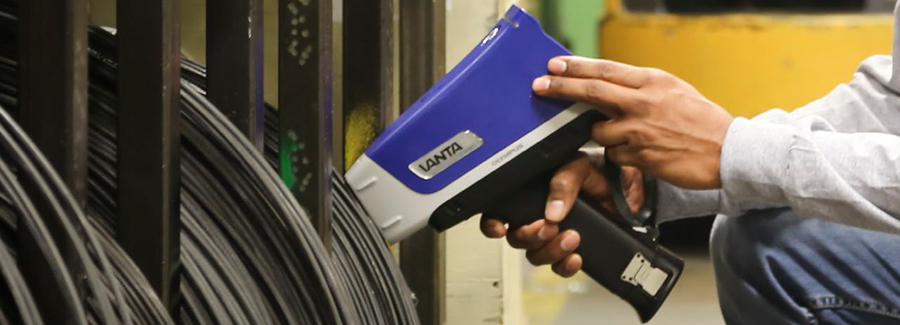
Aluminum alloy is the metal of choice for many industries, and aluminum production and recycling continues to grow worldwide. From weight savings to cost per component, when compared with other alloy classes, aluminum is often the material of choice. Aluminum gains its lightweight strength from magnesium, a critical alloying element frequently specified in the composition.
The ability to quickly detect small amounts of magnesium (<1%) in an aluminum alloy has been challenging for handheld X-ray fluorescence (XRF) because of the lengthy test times required to accurately identify specific amounts of magnesium. With hardware advancements and leading-edge Axon Technology™, the Olympus Vanta™ handheld XRF analyzer has greatly reduced the test time needed to display accurate, low-level magnesium (Mg) in aluminum (Al) alloys.
Vanta analyzers excel at producing rapid and accurate Mg results for Al alloy sorting. Tests fewer than 10-seconds long are often sufficient to resolve Mg values in various Al alloys. With previous handheld XRF instruments, these same tests often exceeded 20 seconds. The graph below shows average results from 10 tests per sample for rapid test times, with the error bars denoting the +/- average of one sigma reported errors from the 10 tests. For Mg > 0.4%, the test times were 3 seconds at 40 kV and only 5 seconds at 13 kV to quantify the shown Mg values. For a Mg level of 0.21%, the testing time in the 13 kV beam increased to 20 seconds. To report the trace level found in AL1100 of 0.03%, the 13 kV beam testing times increased to 60 seconds. |  The same extended time results from the graph are presented in the tables below. |
Results from 380 aluminum grade testing using 3 seconds of a 40 kV beam and 20 seconds of a 13 kV beam.
| Results from 1100 aluminum grade testing using 3 seconds of a 40 kV beam and 60 seconds of a 13 kV beam.
|
A majority of aluminum grades have magnesium content at or above 0.4%. These samples can be accurately sorted with Mg levels quantified in just 5 seconds of testing with the low-energy beam (beam is on a total of 6 seconds). These results demonstrate that relatively short tests are all that are needed to accurately determine grade variants of low-Mg aluminum.


